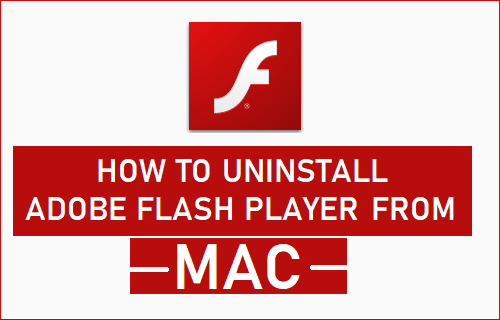I tried to download the latest version of Adobe Flash player to my Mac Mini, but nothing happened. I don't know what antivirus program I have, so I didn't disable it. I have OS 10.6.8 and Safari v.
Many of the most prevalent Mac malware right now arrive on your Mac via a fake Flash Player download. Read more about the threat of viruses and malware on the Mac and how to protect yourself here. How to install Flash on your Mac safely. If Flash is not installed, which is by default on all new Macs, here’s a step-by-step guide to install it safely. Visit the Adobe Flash Player page. Click the Download now button. The installer will download to your computer. If you’re using Safari, the file will go to your Downloads folder. Step 2: Download version - (Released 9/9/2014) Flash Player 15.0.0.152 (Win Firefox and Mac) (132 MB) (though I believe any recent MAC version should do, this just worked for me) Step 3: Install the Flash player from Step 2. Step 4: Download and install the latest version of Adobe Flash Player (that wouldn't initially work).

These instructions are NOT applicable to Flash Player included with Google Chrome. Visit the Flash Player Help page for instructions on enabling (or disabling) Flash Player in various browsers.
Adobe Flash Player For Mac Won't Download Mac
If you use Windows, see Uninstall Flash Player | Windows.
If Flash Player is installed on your computer, the following box displays the version of Flash Player and your operating system. If Flash Player is not installed, an error message appears.
If your Flash Player installation was not successful, use the following solution to reinstall.
Click the Apple icon and choose About This Mac.
The Mac OS version appears in the About This Mac dialog.
2. Run the uninstaller applicable to your Mac OS version
- Run the uninstaller on Mac OS X 10.4 and later, including macOS
Note:
Adobe Flash Player Won't Install
Beginning with Flash Player 11.5, uninstalling the Flash Player resets the AutoUpdateDisable and SilentAutoUpdateEnable settings in mms.cfg to their default values:

- AutoUpdateDisable=0
- SilentAutoUpdateEnable=0
If you are running the Flash Player uninstaller as part of your deployment process, redeploy any custom changes to either AutoUpdateDisable or SilentAutoUpdateEnable.
Run the uninstaller on Mac OS X 10.4 and later, including macOS
Download the Adobe Flash Player uninstaller:
- Mac OS X, version 10.6 and later: uninstall_flash_player_osx.dmg
- Mac OS X, version 10.4 and 10.5: uninstall_flash_player_osx.dmg
The uninstaller is downloaded to the Downloads folder of your browser by default.
In Safari, choose Window > Downloads.
If you are using Mac OS X 10.7 (Lion), click the Downloads icon displayed on the browser.
To open the uninstaller, double-click it in the Downloads window.
Note: If the Flash Player installer window does not appear, choose Go > Desktop in the Finder. Scroll down to the Devices section and click Uninstall Flash Player.
To run the uninstaller, double-click the Uninstaller icon in the window. If you see a message asking if you want to open the uninstaller file, click Open.
- Bookmark or print this page so that you can use the rest of these instructions after you close your browser.
To close all browsers, either click the browser name in the Uninstaller dialog, or close each browser manually and then click Retry.
Note: Do not click Quit in the Uninstaller window. It stops the uninstallation process.
After you close the browsers, the uninstaller continues automatically until the uninstallation is complete. When you see the message notifying you that the uninstallation succeeded, click Done.
Delete the following directories:
- <home directory>/Library/Preferences/Macromedia/Flash Player
- <home directory>/Library/Caches/Adobe/Flash Player
Download the Adobe Flash Player uninstaller:
- Mac OS X, version 10.3 and earlier: uninstall_flash_player_osx_10.2.dmg (1.3 MB) (updated 05/27/08)
Choose Window > Downloads to view the downloaded uninstaller.
Save the uninstaller file in a convenient location.
To open the uninstaller, double-click it in the Downloads window.
To run the uninstaller, double-click the Uninstaller icon in the window. If requested, enter your computer user name and password and click OK.
Bookmark or print this page so that you can use the rest of these instructions after you close your browser. Close all browsers and other applications that use Flash Player, including instant messaging applications, SWF files, and projectors (EXE files that play SWF files). Otherwise, the uninstaller cannot finish (even though it appears to finish).
Once the uninstaller finishes, the window closes automatically.
You can verify that uninstallation is complete by following these steps:
Open your browser and check the status of Flash Player.
Adobe/Macromedia Flash is and probably will always be an inefficient resource hog. However, sometimes there really is no other choice since some websites won't make an alternate version available if you're on a computer vs maybe a tablet

Adobe Flash For Mac Downloads
Simply having it installed probably isn't going to slow down your system any more than any other plug-in if it's not being used. But displaying Flash content is going use a lot of CPU resources. The worst is when you're viewing a web page with several ads (especially 'floating' ads) that each have their Flash content.
